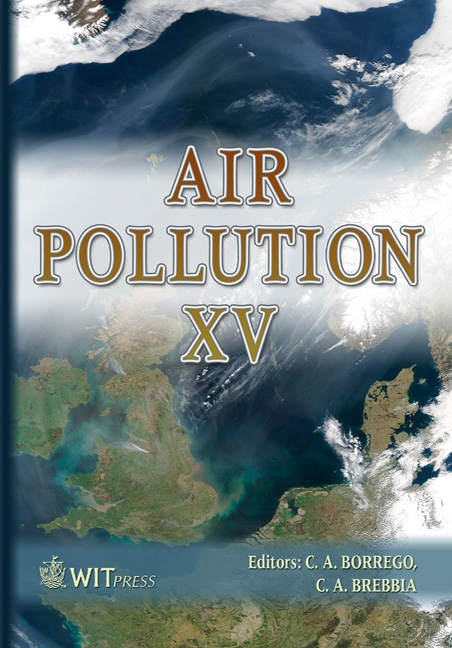Air Velocity And Pollutant Profiles In Krakow
Price
Free (open access)
Transaction
Volume
101
Pages
9
Published
2007
Size
1,568 kb
Paper DOI
10.2495/AIR070081
Copyright
WIT Press
Author(s)
E. Tomczak, W. Kamiński, K. Kamiński & J. Petera
Abstract
This paper presents a numerical grid model based on the finite element method, which enables a computer simulation of air mass flow and pollutant propagation over Krakow. To construct a calculation domain the information from a digital map was used, which allowed us to include an active surface layout into the model. Methods for implementation of velocity fields from a mesoscale meteorological pre-processor as a boundary condition for the model in the city scale were developed. Air velocity profiles over Krakow, calculated from the MM5 meteorological model data are presented. Additionally, the evolution of a concentration field for a hypothetical tracer release in the city was simulated. Keywords: air flow field, modelling of pollutants propagation, meso- and macroscale model. 1 Introduction A key problem in the modelling of pollutant dispersion over strongly urbanised areas is to reflect the effect of local factors on the formation of a velocity profile. A wind field over the city is characterised by a significant spatial differentiation, which in turn determines the processes of transport and dispersion in lower layers of the atmosphere. As a result of the impact of obstacles in the city, flow turbulence increases, the so-called tunnel winds resulting from deep street canyons, flow swirls, and even streams in the direction opposite to average wind are formed [1,2]. It is also important to take into account velocity profiles varying in time, particularly when meteorological conditions over the considered area are changing. Data from the mesoscale
Keywords
air flow field, modelling of pollutants propagation, meso- and macroscale model.





